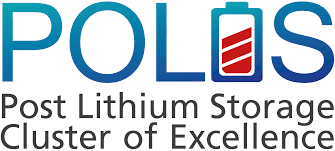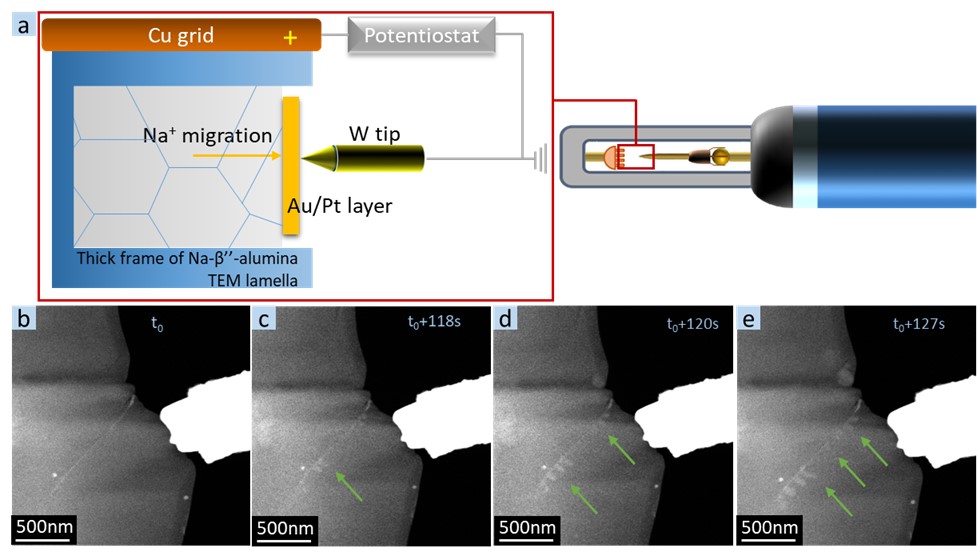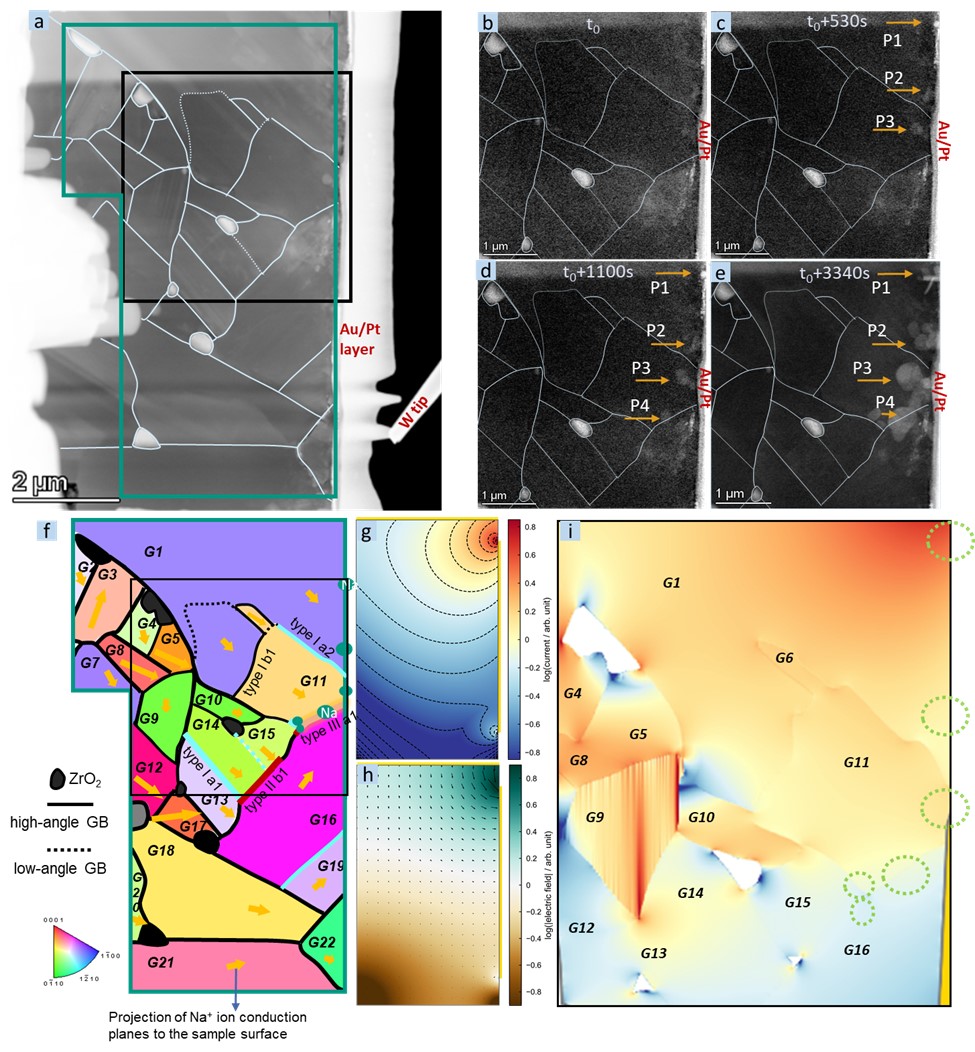Impact of microstructural features on sodium transport & filament formation in all solid-state sodium batteries
The development of all solid-state sodium batteries (ASSSBs) represents a significant advancement in energy storage technology, promising enhanced safety and higher energy density. A critical challenge in ASSSBs is the growth of sodium filaments, which can lead to short circuits and battery failure.
This work examines the Na+-ion transport within a polycrystalline Na-β’’-alumina solid electrolyte (SE) and sodium deposition at the anode, with emphasis on how the microstructural features, mainly grain boundaries (GBs) and grain orientation, affect the growth of sodium filaments.
We have performed in situ scanning transmission electron microscopy (STEM) measurements as illustrated in Figure 1 using a scanning tunneling microscopy (STM) holder. In combination with crystal orientation analysis using 4D-STEM, the effect of the anisotropic Na+ ion transport along/across GBs was explored (Figure 2). Depending on the orientation of the Na+ ion transport planes and the applied electric field on the current distribution and the position of sodium filament growth. This effect was confirmed by the simulations. The in situ TEM analysis was validated by ‘beam-blank experiments’ and large field of view post mortem secondary ion mass spectrometry (SIMS) analysis, in which sodium filament growth within voids among grains and along grain boundaries have been revealed, which ultimately are expected to form a network leading to the failure of batteries.
 |
This work is founded by the German Research Foundation (DFG) under Project ID 390874152 (POLiS Cluster of Excellence) and published in the Advanced Energy Materials. For detail information, you’re welcome to read in https://doi.org/10.1002/aenm.202302322. |
 Figure 1. a. Geometry of the experimental setup for In situ biasing of Na-β’’-alumina. The polycrystalline Na-β’’-alumina TEM lamella is attached to a Cu grid, which was connected to a grounded W tip. By applying a negative potential at the W tip, Na+-ions are attracted from the thick region of the Na-β’’-alumina towards the Au(Pt) electrode (indicated by yellow arrow). b - e. Time series of high-angle annular dark field scanning transmission electron microscopy (HAADF-STEM) images of the Na-β’’-alumina locally in contact with the W tip showing the Na filament growth (indicated by green arrows) at a GB during biasing.
Figure 1. a. Geometry of the experimental setup for In situ biasing of Na-β’’-alumina. The polycrystalline Na-β’’-alumina TEM lamella is attached to a Cu grid, which was connected to a grounded W tip. By applying a negative potential at the W tip, Na+-ions are attracted from the thick region of the Na-β’’-alumina towards the Au(Pt) electrode (indicated by yellow arrow). b - e. Time series of high-angle annular dark field scanning transmission electron microscopy (HAADF-STEM) images of the Na-β’’-alumina locally in contact with the W tip showing the Na filament growth (indicated by green arrows) at a GB during biasing.

Figure 2. a. HAADF-STEM image of the in situ biasing Na-β’’-alumina setup; b – e. time series images during biasing to observe the sodium deposition at the interface between SE and electrode; f. automated crystal orientation map of the green line marked region in a. and sodium filaments were marked; g - h. simulated current density distribution and electric field of the whole sample without the consideration of the microstructure and Na+ ion conduction plane orientation; i. simulated current density distribution of the black rectangle in a with the consideration of the microstructure and Na+ ion conduction plane orientation.
- Deposition of Sodium Metal at the Copper-NaSICON Interface for Reservoir-free Solid-State Sodium Batteries
T. Ortmann, T. Fuchs, J.K. Eckhardt, Z. Ding, Q. Ma, F. Tietz, C. Kübel, M. Rohnke, J. Janek
Advanced Energy Materials, 2024, 2302729; DOI: 10.1002/aenm.202302729. - The Impact of Microstructure on the Filament Growth at the Sodium Metal Anode in All Solid-State Sodium Batteries
Z. Ding, Y. Tang, T. Ortmann, J.K. Eckhardt, Y. Dai, M. Rohnke, G. Melinte, C. Heiliger, J. Janek, C. Kübel
Advanced Energy Materials, 2023, 13(48), 2302322; DOI: 10.1002/aenm.202302322. - Kinetics and Pore Formation of the Sodium Metal Anode on NASICON-type Na3.4Zr2Si2.4P0.6O12 for Sodium Solid-State Batteries
T. Ortmann, S. Burkhardt, J.K. Eckhardt, T. Fuchs, Z. Ding, J. Sann, M. Rohnke, Q. Ma, F. Tietz, D. Fattakhova-Rohlfing, C. Kübel, O. Guillon, C. Heiliger, J. Janek
Advanced Energy Materials, 2023, 2202712; DOI: 10.1002/aenm.202202712.

